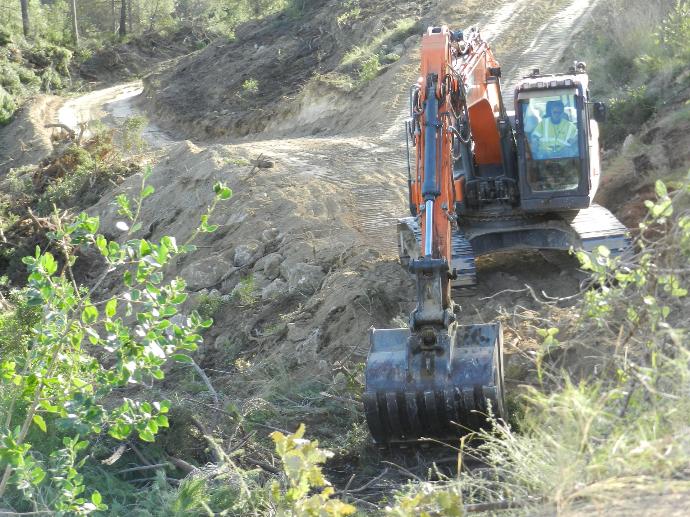
Micromecenatge: Defensem l'Àliga Cuabarrada de Gelida de la sentència de mort dictada pel macroprojecte d'Ametller Origen! Fes la teva donació!
Convidem a qualsevol persona i organització a difondre aquest manifest i adherir-s’hi a través d’aquest formulari. Més de 50 entitats i 700 persones ja ho han fet!
Exigim l’aturada urgent de les obres que amenacen la supervivència de la parella d’àligues cuabarrades a Gelida i el compliment de les lleis de protecció de fauna a tot el territori
Més imatges , vídeos i plànols de les obres de destrucció d'Ametller Origen a Gelida


Introducing the "Agroparc" Ametller Origen
In dry land, the Ametller Origen project will install technical greenhouses, photovoltaic panels, partly underground industrial buildings, a biogas plant and a water treatment plant. All combined with walking areas, tourist activities and rural accommodation. This is the fake Agroparc he wants to build between Gelida and Sant Llorenç d'Hortons in Alt Penedès.
The project will affect everyone in some way, be they farmers, local residents, small businesses, hikers, cyclists, .... It will affect your health (non-organic food, environmental pollution, light pollution, ...), it will affect the your working life (increase in job insecurity, expulsion of independent farmers, ...), in the impact on water, on species and on nature in general.
of rustic and agricultural land affected
of industrial zone
height of greenhouses
logistic gates
for lorries
of infrastructures on rustic and agricultural land,
of great ecological importance
daily trucks
requalified dry soil
for new greenhouses
endangered species
amongst them
the Bonelli's eagle
they disappear from the vine
of special protection
visitors to the "theme park" per year
Why do we say no here are more details
In October 2021, together with Gelida City Council, the Ametller Group presented its new “Agroparc Penedès” project in this municipality.. [
Agropark planning progress
] [
graphics
]
It was a reformulation and expansion of the project that was already presented last year 2017 , against which we already raised our voices because of the negative consequences it could entail for our territory. Then, it was kept in the drawer because Ametller did not have industrial land to implement all its activities. With the acquisition of Can Joncoses -agricultural land reclassified as urbanized land, but never developed-, the project doubles, going from 121 ha to 258 ha.
With the new project initially approved in December 2022, the area increases to 322 ha, the greenhouses take up 21 ha and the landfill 23 ha.
Tot i que l’Agroparc es
pretén mostrar com a un projecte de “cicle tancat”, virtuós i complet,
la realitat és que suposarà l’aplicació retorçada de la normativa de
planejament territorial per aconseguir la implantació simultània d’una
fàbrica d’elaborats, d’un parc fotovoltaic, de granges i de cultius
intensius en hivernacles en sòl de secà de vinya protegida, entre d’altres coses. Des de
StopAgroparc
ens reafirmem en la nostra oposició i diem clarament que
NO.